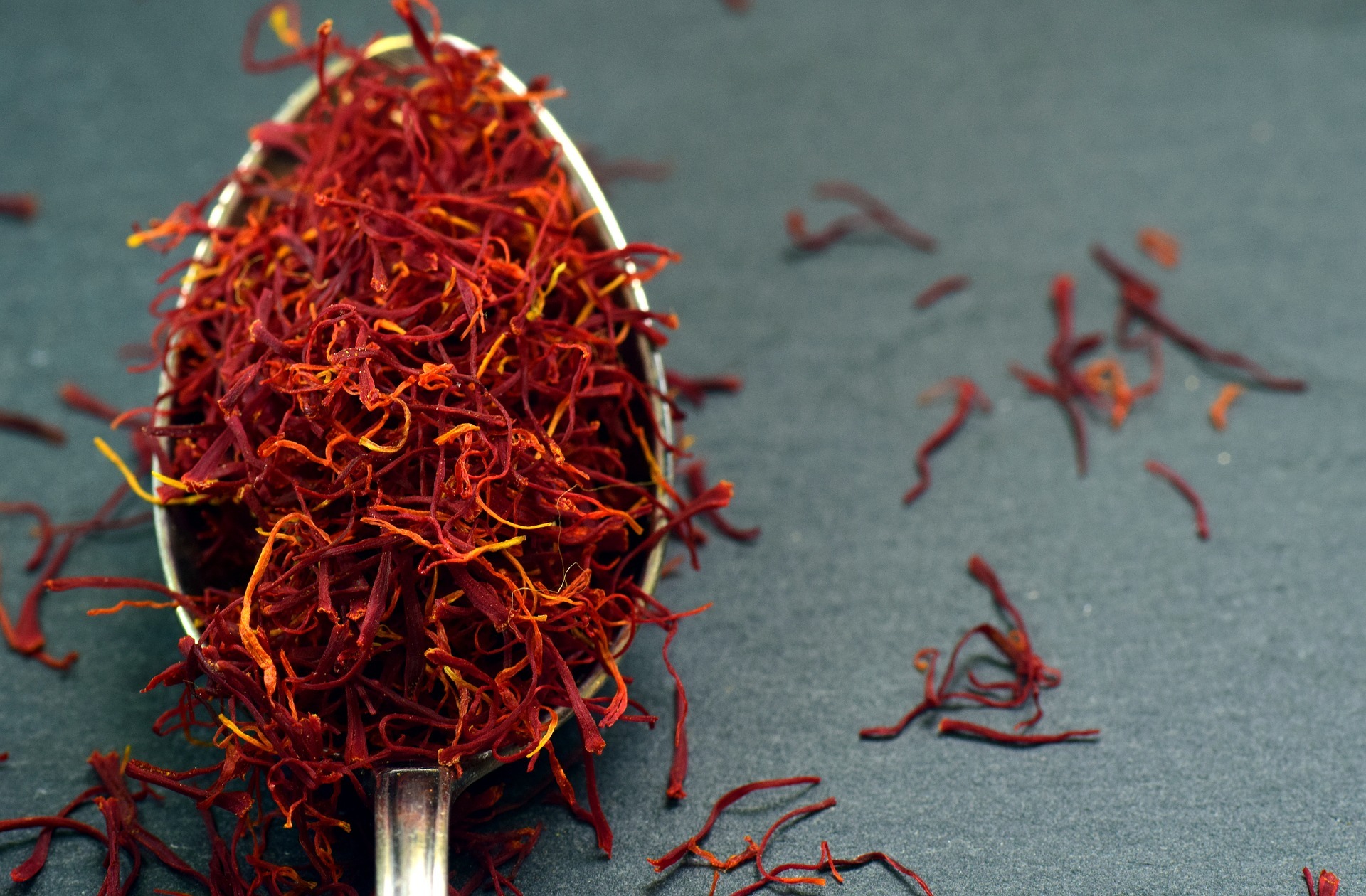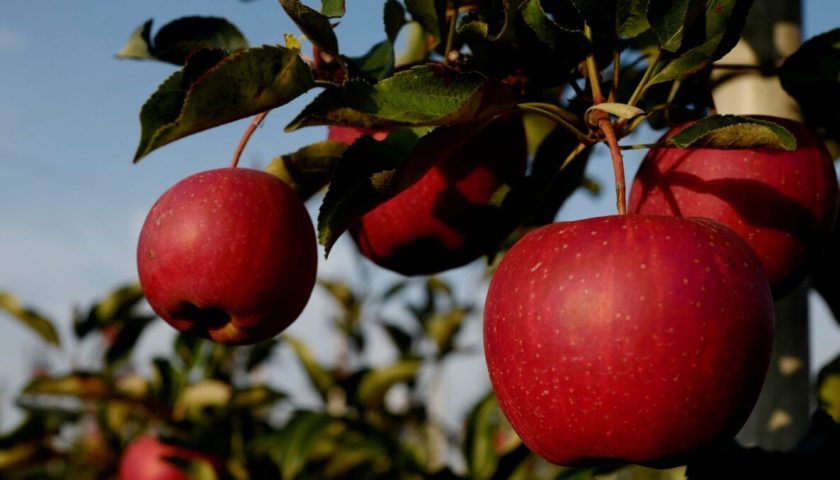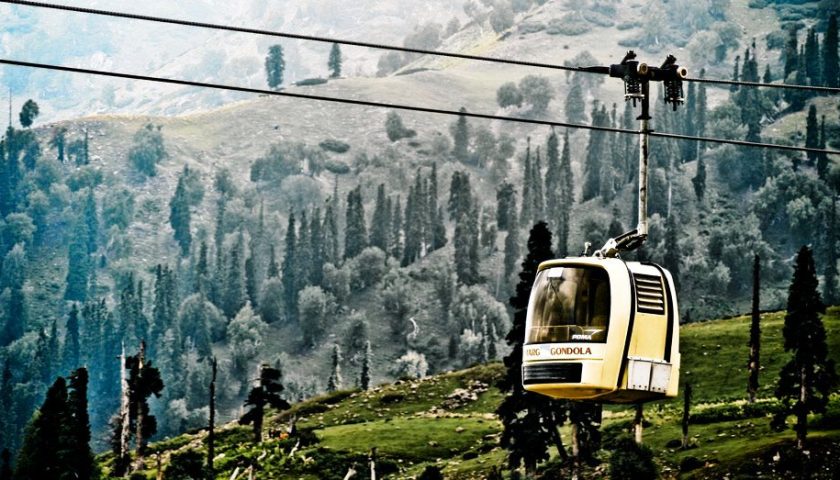Amidst the towering snow-capped mountains of Pampore, Kashmir, lie fields covered in a blanket of purple crocus flowers. This is the flower that produces the precious spice known as saffron. Pampore, a small village located around 14 kilometers from the state capital, Srinagar, is known as the ‘Saffron Capital of India’, with more than 20,000 families associated with saffron cultivation.
The saffron produced in the region is of superior quality and can fetch as much as Rs 2, 50,000 per kilogram in the market. The laborious task of cultivating saffron is what makes the spice so valuable.
The process begins with the villagers picking the delicate flowers and collecting them in wicker baskets. Each flower is then sorted according to its three parts — the petals, the yellow strands, and the red strands. Pure saffron is derived from the red strands. More than 1,50,000 flowers are sifted and scanned for a kilogram of the crimson spice. After this, the strands are dried over a charcoal fire.
Across India, this spice has many names — Zafran in Urdu, Kesar in Hindi, Kong posh in Kashmiri, and kungumapoo in Tamil. Alongside the multiple names it is known by, there are numerous accounts of how the spice came to India.
Kesar is also a culinary star used by Kashmiris for stews, broths, and kebabs, as well as in milk to break the Ramadan fast. It was under the Mughal rule in India that saffron was first used to flavor flatbreads like Sheermal, lamb curries, and fruit sherbets.
Loved by many is the Kashmiri saffron-infused green tea called Kahwa, or Kehwa, that makes you fall in love with it. This elixir is brewed slowly in a copper samovar with spices such as cardamom and cinnamon, served with a dash of honey, and sometimes garnished with slivers of almond.
More recently, saffron has attracted a renewed interest for its use in cosmetics. Since ancient times, saffron has been used for cosmetic purposes, absorbed in infusion or even in the cutaneous application, mixed with fat or macerated in donkey milk, for its eternal youthful properties. Cleopatra used it in her beauty products.
In traditional Iranian medicine, saffron is used to improve the complexion and can be used to treat erysipelas. In traditional Greek medicine, it is used to refresh the skin of the face and is used to relieve the liver of the domination of bile and to treat acne, skin diseases, and wounds. In addition, the body may look younger and brighter.
Nowadays, saffron tepals have been studied in several studies as being rich in crocin and kaempferol, thus representing an important source of bioactive compounds for potential cosmetic formulations. Besides the antioxidant properties, saffron presents multiple interests for cosmetic applications.
Kesar is not just a reminder of all the beauty, magnificence, and glory of Kashmir, it is also a reminder of how central this region has been in our history.
Unmistakable and irreplaceable
According to legend, saffron arrived thanks to two Sufi ascetics in the 11th and 12th centuries C.E. When these men became sick, they were healed by a local, and in return for his services, the Sufis gifted him with a saffron crocus bulb. In Pampore, a town famous for its saffron, you can even find a shrine and tomb dedicated to the two men. In reality, however, saffron grew in Kashmir for much longer. It most likely came to Kashmir thanks to Persians in 500 B.C.E.
You can see the significance of Kashmiri saffron in the cuisine. Since harvesting the spice takes such care, a little goes a long way. While breaking fast during Ramadan, it’s common to infuse the milk with saffron. During a funeral or wedding, Kashmiris make “Wazan,” which is a 30-dish meal prepared by professional chefs. To make the meal special, guests sip golden-hued broth infused with saffron, as well as lamb with saffron and chiles. The most important place for saffron, however, is in “Kehwa.” This slowly-prepared green tea has other spices, like cinnamon and cardamom, while the saffron gives it an unmistakable golden color and sweetness. Imitations will use turmeric, but the flavor can’t be replicated.
The future of saffron
Kashmiri saffron is currently the most valuable spice in the world. It’s more valuable than its counterpart from Iran. For one pound of saffron, you might pay as much as $1,500. The significance of Kashmiri saffron from an economic standpoint should be noted. It’s an extremely important crop for the people of Kashmir, especially Pampore. However, in the past few decades, the crops have shrunk. Ten years ago, one farmer was able to harvest 200 kilograms. Now, her crop weighs under 7 kilograms. Why?
Climate change plays a big role. While crocuses need a regular cycle of wet springs and dry summers for a good autumn harvest, climate change makes the weather more inconsistent. Droughts mean much smaller crops. Other factors like political conflicts (Pakistan and India have been fighting over the region for decades) and smuggling hurt the industry, too, but it appears that a changing climate is the biggest issue. Other saffron-producing areas like Spain and Iran have more technology and funding that helps keep their spice trade bolstered, but Kashmir is suffering. Will their saffron disappear?






